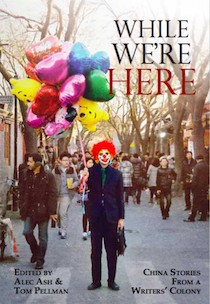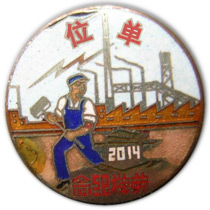Breaking Stereotypes
Being black in Taiwan – by Mycal L Ford
In front of me, a sea of bodies stretches for what seems like miles – though it couldn't be more than a hundred yards. I am on stage at the elementary school I'm about to start teaching at in Kaohsiung, southwest Taiwan. All eyes are on me. The sun beats down on my skin, cooking it almost well-done. Something liquid races down the side of my rib-cage to my hips. If I raise my arms, sweat will pour from my armpits and swallow the hundreds of students waiting to greet me. I keep my hands down to save myself the embarrassment.
A deep, almost god-like voice echoes from the speakers. That’s my cue. I puff out my chest, stand up straight, shake out my new dress shoes, adjust my khakis and straighten the collar of my wrinkled polo. That’s when the orator, the principal of the school, introduces me as President Obama.
It’s a stereotyped comment I’m far from unfamiliar with. I meet the principal’s eyes, then look at the crowd. Everyone is waiting. My heart nearly jumps out from my chest and time comes to a screeching halt. Will I allow the implication that all black people look alike just slide? If so, am I perpetuating a pattern I’ve come to notice in East Asia – the assumption that people like me either come from the African continent or only play basketball. I pause, take a deep breath and step forward. I wave, I smile and I greet everyone in Chinese, without objecting.
I’ve made my decision, for now at least.
***
A little over a month has passed since that presidential welcome in early September, and I’ve made some friends among my fellow co-workers. Then, one boy’s question again speaks to the heart of my experience as a black male who has spent time in Japan, South Korea, China and Taiwan.
It is another sizzling hot day – such are the problems of living on an island. I'm with one of my co-workers, visiting her hometown in Pingdong on the southern tip of Taiwan. We are accompanied by her daughter and the daughter’s young cousin. He is about seven years old – short, slightly chubby. Although I met him earlier that day, he has developed an affection for me. By mid-afternoon, I look down to discover his itty bitty fingers folded in between mine.
He turns his head and looks at me. I sense he’s been thinking about something for a while. He asks, with much curiosity, where I come from. I smile and reply, “Well, I come from the United States.” He looks confused. He stutters, “But I thought Americans only had golden hair?”
Without much hesitation, I explain to him that Americans come in different shapes, sizes and most of all, colours. I try to help him think of it as a kaleidoscope, with the myriad of different colours overlapping with one another.
***
Another month on, it’s the middle of October and I have the opportunity to teach hip-hop dance as an extracurricular programme to my students.
The room is filled with mirrors, and a ballet beam pole runs down one side. Nineteen elementary students slowly trickle in, and I can smell their fear. They are nervous. For all they know, they signed up for a dancing class. But what kind of dancing? What is this thing called hip … hop? Is it a kind of jumping?
I ask the students to sit down, and hand out sheets of blank paper. I tell the students, “You can draw, you can write, both in English and Chinese, about anything that you might have heard or seen about hip hop. You don’t have to be right. Teacher Mycal simply wants to know what you know about hip hop.”
Diligent students that they are, they take to their papers. I pace the room, intrigued and surprised by some of the things I read and see. While many of them write “I don’t know,” one student draws a picture of a racially ambigious man wearing a sideways basketball cap, a gold chain and basketball jersey. I stop walking and engage the artist of this sketch. She is nine, with a pair of glasses sitting slightly crooked on her face, her hair in a tight ponytail. “Hi, can I take a look at your picture?” Her bangs slap against the rim of her glasses as she nods her head yes.
How interesting, I think. Are these the only images of people of colour that are being imported from the US – commodified, one-dimensional portrayals of real people? Again, I ask myself, will I allow this stereotyped generalisation just slide.
With a smile and a slight tilt of my head, I thank her. I stand up, collect all the papers and begin my class by showing them a map of the United States. I point out the importance of music, art, breakin’ and poppin’, and how these art forms took shape in the black American communities spread throughout the US.
In doing so, I try to challenge long expired paradigms that I've seen linger in Asia, in a way that is productive, positive and celebrates diversity. And I encourage them to get to know me not as Obama, a basketball player or a rapper, but simply as Mycal, a laowai and a friend.
•
Mycal L Ford was a Fulbright English Teaching Assistant in Kaohsiung, Taiwan, from 2011 to 2013. He now lives in Chengdu, Sichuan, where he writes a blog

















